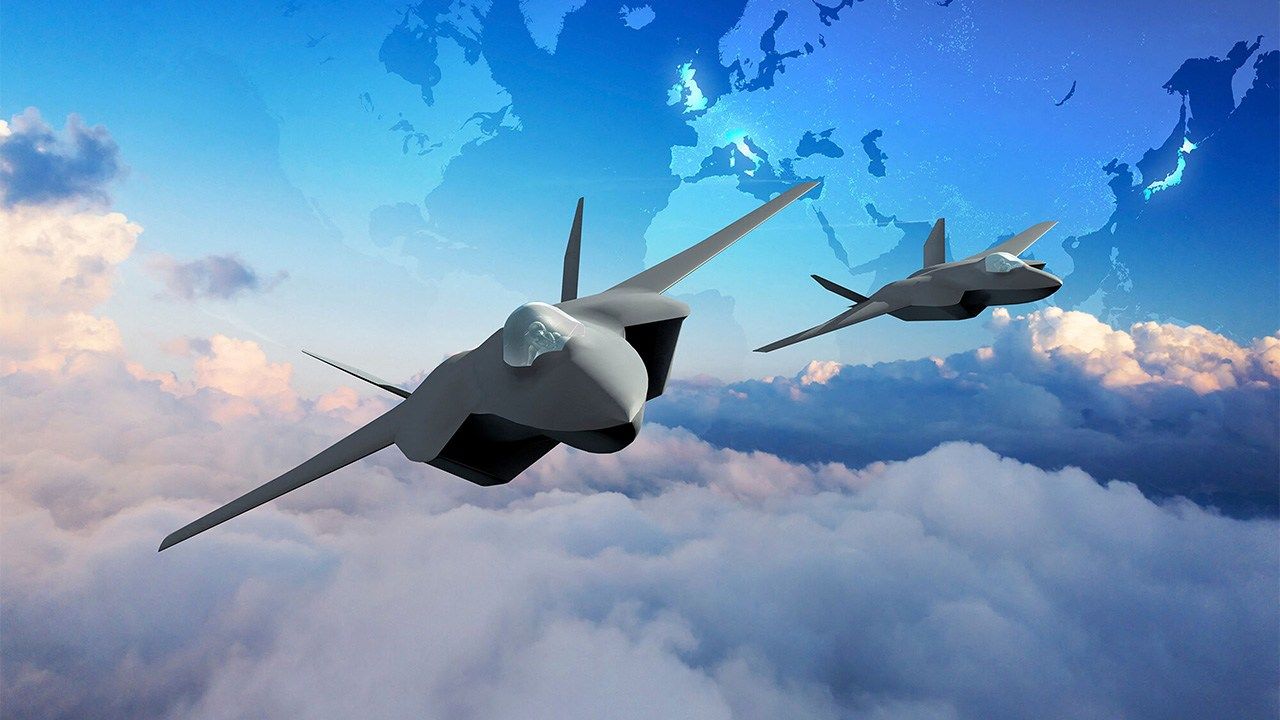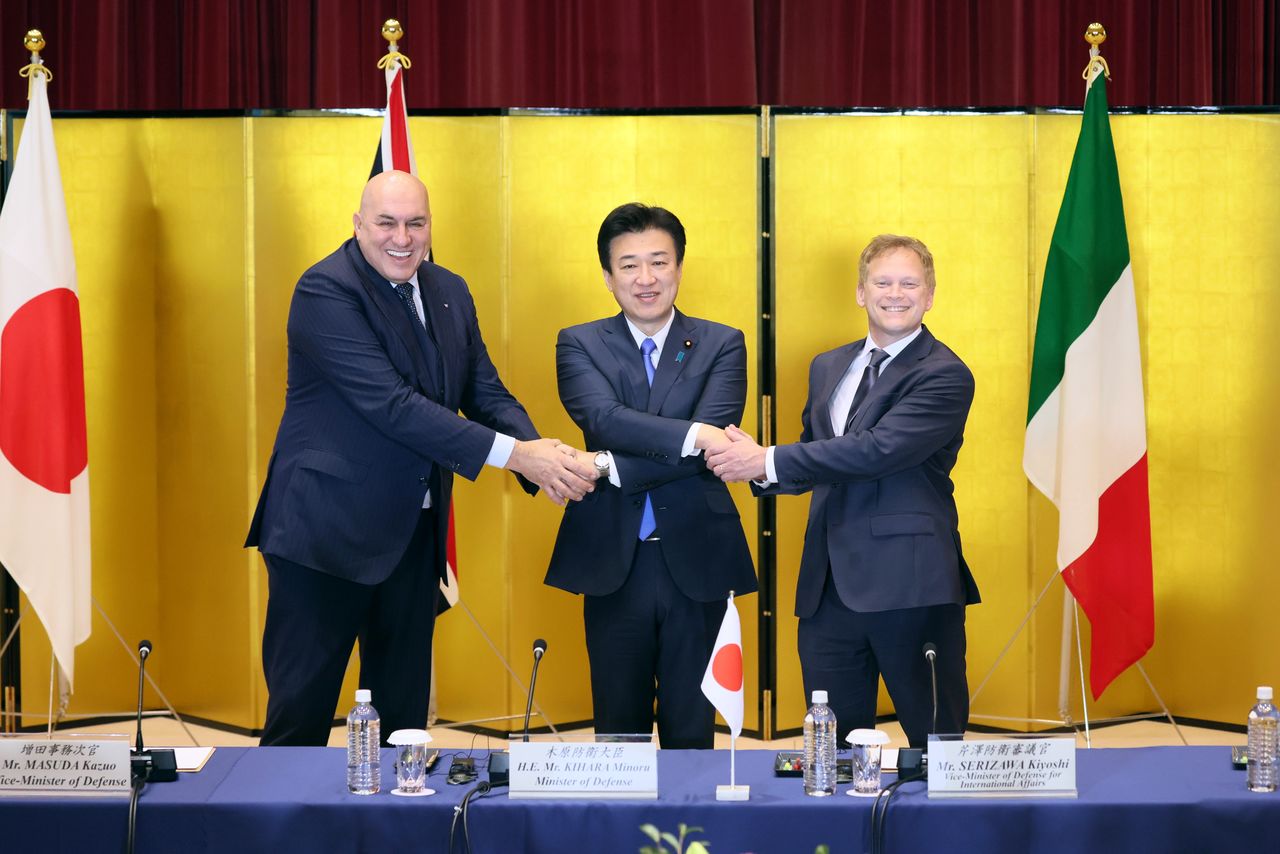
Japan-UK-Italy Fighter Consortium Powers Forward: Exports Next on the Agenda?
World Politics- English
- 日本語
- 简体字
- 繁體字
- Français
- Español
- العربية
- Русский
The Historic Global Combat Air Programme
In late 2023, Japan’s foreign and defense ministers signed a historic defense agreement with Britain and Italy to jointly develop a sixth-generation fighter jet. The fruit of a joint statement by the Italian, British, and Japanese leaders in December 2022, the Global Combat Air Programme rapidly took shape during 2023. This precipitated the visit to Tokyo of British Minister of Defence Grant Shapps and his Italian counterpart Guido Crosetto to consolidate the partnership in the form of a treaty. Following the December 14 signing, Japan’s Minister of Defense Kihara Minoru shared his conviction that the partnership “brings together the best technologies from Japan, the United Kingdom, and Italy to strengthening deterrence in the face of the most challenging and complex security environment since World War II.”
The treaty establishes an intergovernmental organization called GIGO (GCAP International Government Organization) to supervise and coordinate the joint development process. The GIGO convention is historic because it is the first time that Japan has committed to the codevelopment of a major military platform with a country other than its sole ally, the United States. Many such partnerships fail to get beyond the exploratory stage, so the agreement shows that the program is gathering steam toward a formal start date in 2025. The goal of GCAP is to deploy a sixth-generation fighter by 2035.
NATO’s Future Mainstay Fighter?
In addition to establishing GIGO, the three governments also agreed to establish a joint venture as the commercial arm of the project. Reflecting the project’s collaborative nature, GIGO will be headquartered in Britain but headed up by a Japanese national, while the joint venture lead will come from Italy.
Comments surrounding the agreement show high hopes for the consortium. London for example anticipates that the project will harness and integrate cutting-edge technologies, thereby making the GCAP fighter “one of the world’s most advanced, interoperable, adaptable, and connected fighter jets in service globally.” It will be a supersonic stealth fighter with advanced sensors that deploys next-generation artificial intelligence technology. Capable of unmanned flight and armed with hypersonic weapons, the jet “will boast a powerful radar that can provide 10,000 times more data than current systems, giving a battle-winning advantage.”
Tokyo envisages the GCAP jet becoming its secondary fighter, replacing the 90 or so currently deployed Mitsubishi F-2 jets, originally codeveloped in the 1980s with the United States and based on the F-16. The F-35 will remain Japan’s mainstay aircraft for the time being. However, London and Rome envisage the GCAP fighter becoming their own mainstay aircraft, replacing their Eurofighter Typhoon inventories of 144 and 94 fighters respectively.
For Japan, GCAP’s significance goes beyond updating the Self-Defense Forces’ own aging platforms and economizing budgetary resources. Britain and Italy are both foundational, influential members of NATO that worked together in developing the Eurofighter Typhoon. NATO members have procured over 500 Eurofighter units since 1994. The decision by London and Rome could therefore pave the way for even greater procurement and sales of the GCAP fighter.
While another consortium consisting of France, Germany, and Spain is also working on a next-generation fighter as part of the Future Combat Air System project, the Times of London recently reported that Germany had expressed interest in GCAP’s progress following difficulties surrounding different Franco-German requirements for the FCAS fighter. There is also the possibility that new NATO members such as Sweden or even Middle Eastern nations like Saudi Arabia will consider procuring the GCAP fighter if the program meets its goals.

Japanese Minister of Defense Kihara Minoru (at center) shakes hands with British Minister of Defence Grant Shapps (right) and Italian Minister of Defense Guido Crosetto (left) at the Ministry of Defense in Tokyo on December 14, 2023. (© Jiji)
The economic benefits also go beyond export sales. Major industrial players in each country, including joint venture participants Leonardo (Italy), Mitsubishi Heavy Industries (Japan), and BAE Systems (Britain), welcomed the conclusion of the treaty. The GCAP partnership is expected to have deeper industrial benefits for all three countries involved by attracting R&D investment and fostering opportunities to cultivate the next generation of skilled engineers and technicians. Approximately 9,000 people worldwide are expected to be directly involved in the development, and more than 1,000 Japanese companies could be involved in both development and the provision of parts and components. By supporting and enhancing specialized human resources, GCAP could enhance Japan’s commercial strength and technological innovation potential while also providing a lifeline for Japan’s struggling domestic defense industry.
The expansion of sales beyond the GCAP consortium would bring more than just economic and industrial benefits. Japan, Italy, and Britain are all committed to ensuring that the final aircraft will be interoperable with other NATO allies, especially the United States. Japan’s involvement in developing, refining, and manufacturing a mainstay fighter would embed Japan more firmly than ever in global defense relations with NATO, with which the country has strengthened ties in recent years, enhancing its own deterrence capabilities and diplomatic influence. Japanese involvement in development and exports for the GCAP program would enhance Tokyo’s security cooperation with Britain, Italy, and other NATO members, contributing to global peace and stability by dissuading unilateral changes in the status quo on either side of Eurasia by authoritarian states such as China and Russia.
“No Divorce for the Next 40 Years”
In March 2023, the then British Minister of Defence Ben Wallace spoke about what the commitment to GCAP signifies in his keynote speech at DSEI Japan: “GCAP isn’t going to be a short love affair. It’s going to be a marriage,” and therefore, “there’s no going back. The three partners have to keep each other going with forward momentum. There’s no changing our mind at the end of the decade or halfway through because to do so is to let each other down.” Only a few months prior Tokyo and London had signed a Reciprocal Access Agreement, which establishes procedures for visiting forces when conducting port calls and joint exercises in each other’s country. This was only Japan’s second RAA following the one signed with Australia in 2022. The RAA and the GIGO treaty and the joint fighter development effectively makes Britain a “quasi-ally” for Japan much like Australia.
For Britain, the RAA and the GIGO treaty are the logical extension of its Indo-Pacific strategic “tilt” and London’s increasing awareness of the need to balance China’s growing regional and global ambitions. British Prime Minister Sunak had previously said that the partnership with Japan and Italy had underlined that “the security of the Euro-Atlantic and Indo-Pacific regions are indivisible.” Following the signing of the GIGO pact, defense minister Shapps shared his belief that “It will strengthen our collective security” at a time when “the risks and problems from Europe to Indo-Pacific are clear for all to see.”
For London, fighter development is the foundation of a new “alliance” with Japan that will facilitate Britain’s Indo-Pacific outreach. The GIGO agreement follows the drastically changing global security environment of the last few years. Russia’s invasion and occupation of Ukrainian territory is ongoing, and China’s rapid military modernization and build-up program continues apace despite its economic slowdown. Furthermore, there are no signs that the declining global influence of the United States will be reversed. Therefore, the joint development of the next-generation fighter jet shows the strategic significance of cross-bracing between advanced nations that share common values of democracy, human rights, and the rule of law.
Importantly, the trilateral partnership has been welcomed by the United States. The US Department of Defense and Japanese Ministry of Defense released a joint statement in 2022 making it clear that “The United States supports Japan’s security and defense cooperation with . . . the United Kingdom and Italy—two close partners of both of our countries.” The joint statement also positioned US-Japan defense equipment cooperation as complementary to GCAP and was optimistic that “cooperation with likeminded partners” would enable “joint responses to future threats in the Indo-Pacific region and beyond.”
Kōmeitō’s Reluctance
The realization of the GCAP fighter cannot be taken for granted, however. The GIGO convention clearly points toward exporting the GCAP fighter to third countries—certainly that is the intention of both Britain and Italy. The development of military platforms like these costs trillions of yen, and the export of fighter jets to Europe, the Middle East, and Southeast Asia is on the agenda to take advantage of economies of scale and offset the development costs with export sales. Exporting this platform would also solidify security relations with importing nations.
Tokyo, however, has long officially kept the door shut on its own export of the jet and components to third-party countries. The ruling coalition not only includes the conservative Liberal Democratic Party but the ostensibly “pacifist” junior partner Kōmeitō. While Kōmeitō had previously indicated its willingness to relax defense equipment export restrictions, it suddenly began dragging its feet in late 2023 precisely around the time the GIGO pact was signed.
The consent of all three consortium members for exporting the finished product and codeveloped components to third-party countries will be desirable if not necessary. If Japan remains reticent, it may harm British and Italian national interests in addition to Japan’s own by raising doubts about the wider availability of the GCAP fighter in the future. Indeed, at a press conference at the British Embassy in Tokyo immediately following the signing of GIGO, defense minister Shapps expressed his expectation that Japan would review its defense export principles out of consideration for its “global position” and to ensure the joint development project would move forward.
The government has asked the ruling parties to conclude talks by the end of February to at least allow the export of equipment developed with international partners to third countries. However, Kōmeitō, considered one of the most China-friendly parties in the Diet, remained steadfast in its reluctance until mid-March, when it reached agreement with its coalition partner, the LDP, on approval for exports. [On March 26, the cabinet reached a decision easing restrictions on arms exports to countries with which Japan has entered defense pacts.—Ed.]
Some observers believe that the hardening of Kōmeitō’s stance may have been related to a November visit to China by Kōmeitō leader Yamaguchi Natsuo. If Kōmeitō remains a barrier to exports of the GCAP fighter in the future, it could bring the project to a standstill, tarnishing Japan’s international reputation and posing a serious diplomatic problem. Kōmeitō should turn to pragmatic pacifism based on a global perspective and agree to ease exports to protect Japan’s national interests.
(Translated from Japanese. Banner photo: Visual representation of the fighter jet to be jointly developed by Japan, Britain, and Italy. © AFP/Jiji.)